What Reassurance Means for Brands in the COVID-19 Era

Part of the Humanizing Brand Experience Insights Series
By: Mike Maio – Associate Director of Strategy and Luke Bemis – Senior Director of Strategy
No matter the brand, business, industry or audience, it is humbling to see so many persevere and find their way in a world that is defined by uncertainty and ambiguity. No doubt, COVID-19 has turned our world, and the brands that define it, upside down. The empathy and ambition that resides in us all has everyone searching for what it means to do our part, find meaning in what we are doing, and staying true to who we are. Yet, at the end of the day, being in business means finding a path forward and a way to contribute to a world that is as complex, unpredictable, and dynamic as ever.

Many brands have stepped up by stepping onto the front lines.
Most commonly, this means finding ways to leverage physical assets and infrastructure to help fuel the shortage of personal protective equipment (PPE) and donations that directly affect the front lines. From Nike retooling their production lines to create face masks for Oregon Health & Science University, to Pernod Ricard SA shifting its focus to create thousands of gallons of hand sanitizer, to Allbirds donating shoes to front line workers, we all owe our collective gratitude for what they are doing to serve the greater good. There are plenty examples of these heroic efforts, but how can brands go further?
Unfortunately, not all brands have production capabilities, or are positioned to pivot these capabilities in a way that addresses the most obvious immediate need associated with today’s reality. This leaves many struggling to find a meaningful path forward and begs the question: how do brands answer the call of humanity in ways that are true to their core promise?
Monigle has spent nearly 50 years exploring, analyzing, and assessing the intricacies of building brands that are authentic, relevant, and timeless. Most recently, we have developed a proprietary research study that focuses on the drivers associated with connecting people and brands on a more human level and moving people to take action – it is what we refer to as Humanizing Brand Experience (HBE).
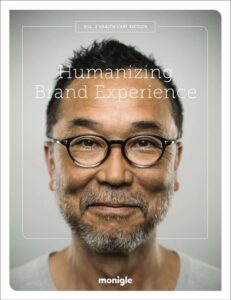
Learn More: Download the Humanizing Brand Experience Vol 2 Report
The HBE study was created to understand the intellectual, emotional, sensorial, and behavioral drivers that influence how modern-day consumers engage with brands. The core ideals imbedded within this study provide a valuable lens for how we tackle the question of brand and business relevancy across all industries in the age of COVID-19.
There is one core idea in the HBE research that provides insight and guidance into the path forward. It is the idea of security, which is captured through the following premise posed in our research: (The brand) gives me reassurance that they will be there for me when I need them. To dimensionalize what security means to consumers, it is important to understand three key attributes:
-
- Credible: The experience is consistent and authentic to the brand promise
- Compassionate: The solution is anchored in benevolent motivation and is not financially prohibitive for intended audience
- Competent: The brand has the latest research, technology, and training required to deliver on the identified area of need
It is through the lens of HBE that we encourage you to take a journey with us and explore a few exemplary brands that are doing good in the world and staying true to who they are and the business they are in.
Learn More: Brands, not Governments, can be our COVID-19 Cure
How Walmart is Helping People Save Money and Live Better
Walmart has a long history of providing access to goods and services for the budget conscious shopper. Through its buying power, Walmart has been able to keep prices low for their customers. It probably comes as no surprise that their brand vision is to “save people money so they can live better.” In a testament to their commitment to this vision, Walmart fast-tracked a new product, a 2-hour delivery service called Express Delivery, in response to the pandemic. Walmart acknowledged the pressure the pandemic was putting on families living on limited budgets – paying higher prices with competitors exploiting the business opportunity or having to risk their health going into stores.
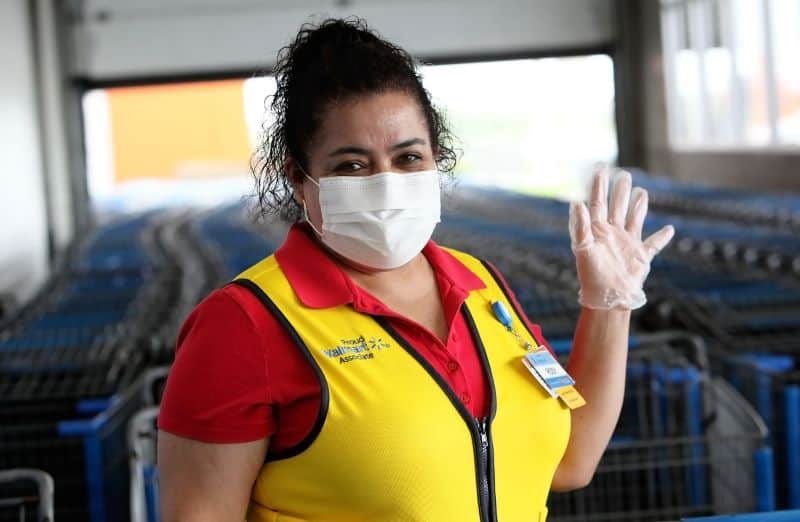
Photo Courtesy of Walmart
Walmart recognized that the pandemic sparked a massive shift in how people shop, how they view the store experience and what they value, with health and safety being paramount. In accelerating the launch of Express Delivery, Walmart has helped their customers live better by enabling them to shop for urgent needs without risking exposure in the safety of their home. In addition to this launch, Walmart has established a page on its corporate website that shows all the efforts they are taking to keep their associates, customers and community safe.
Walmart will have the 2-hour Express Delivery service in more than 2,000 stores, allowing customers to shop for more than 160,000 products from groceries and everyday essentials to toys and electronics, for an additional $10 on top of regular delivery fees. To fulfill this service, Walmart will rely on its team of 74,000 personal shoppers dedicated to picking goods for Express Delivery, adding more jobs during a time when other businesses are cutting staff.
Let’s explore how Walmart is reassuring its customers in a way that builds on the promise of their brand:
-
- Credible: Walmart expanded its existing online delivery options to help meet their customers’ needs through near-immediate e-commerce
- Compassionate: Walmart recognizes the difficult position their customers have been in and does not believe supplies should have to come at the expense of health
- Competent: Leveraging its massive supply chain infrastructure and dedicating 74,000 employees, Walmart can confidently deliver orders within 2 hours
The bottom line: Express Delivery is helping Walmart customers to live life. Especially when time is of the essence, whether you need a missing ingredient or require medicine to fight a fever, Walmart has proven that it will be there for its customers no matter what.
How Zoom is Facilitating Learning Everywhere
Of the few companies that have been able to turn this pandemic into a growth accelerator, Zoom is perhaps one of the most notable. A video communications platform with a vision of “making video communication frictionless,” Zoom has experienced exponential growth as people are required to stay home and social distance from friends and family. Zoom has quickly become the go-to-software for both young and old in the age of COVID-19. For comparison, as of the end of December 2019 Zoom had 10 million daily users; in April they reached 300 million daily users. Zoom’s market cap is $48.78 billion dollars USD – that’s larger than the combined market cap of the top 7 airlines.
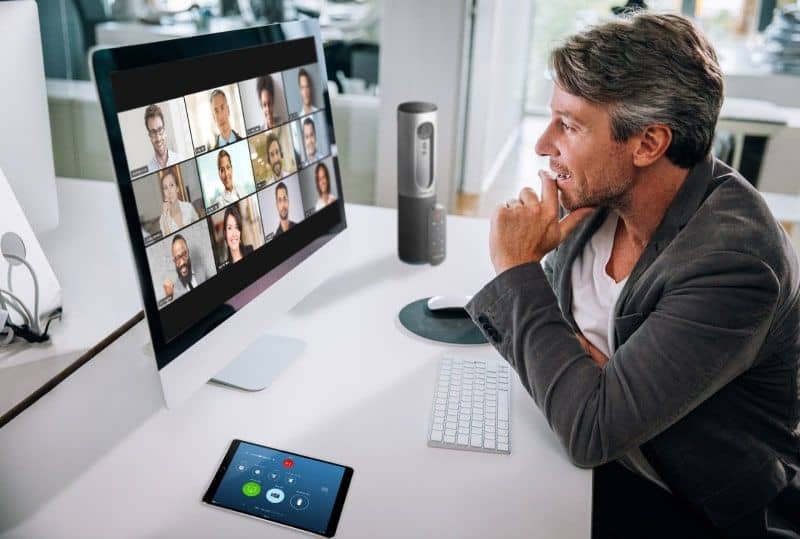
Photo Courtesy of Zoom
However, as the virus forced millions to work from home, Zoom’s success didn’t come without challenges. During the “zoom-ification” of society, security vulnerabilities were exploited by hackers. At the core of the issue was a security flaw related to how accounts were set up. Instead of placing blame on users, CEO Eric Yuan was upfront and transparent. He owned up to the mistake, saying that Zoom wasn’t prepared for this influx of users. He committed to provide more explicit training and tutorials to help individuals and businesses be secure on their platform. Recently they’ve rolled out even more security measures to keep people safe such as enabling hosts to lock the meeting, kickoff users, or restrict people from sharing their screen
Learn More: Humanizing Brands, Moving People
The Zoom team is not stopping there. The company went further by offering their enterprise account for free to K-12 schools globally. Zoom is in a unique position to help bring some normalcy during uncertain times. Since their public offer, 90,000 schools across 20 the nations have taken Zoom up on the offer to use the platform to help teachers continue lessons and students learning for free. Zoom, no doubt, provides an important connection as many parents look to balance kid duty with work commitments.
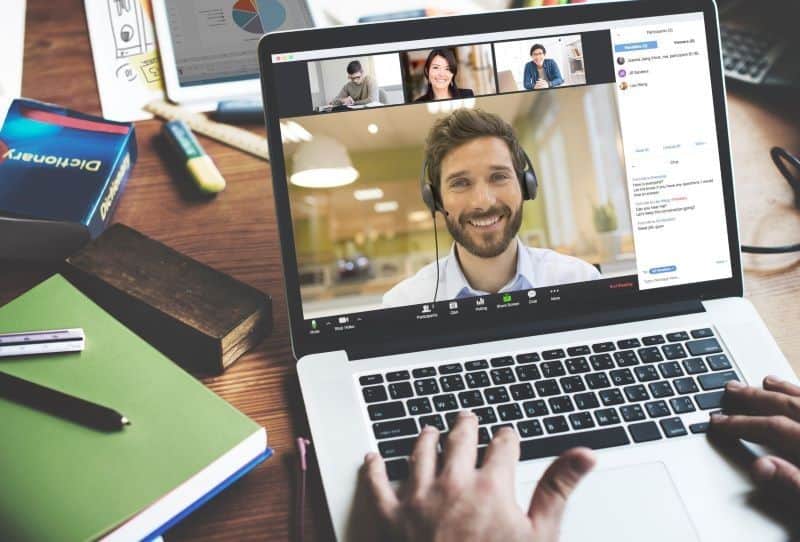
Photo Courtesy of Zoom
Zoom shows that in the light of unexpected challenges, we can all preserve, learn, and grow when it is needed most:
-
- Credible: The transparency of the CEO translated into an enhanced day-to-day experience on the Zoom platform
- Compassionate: Providing enterprise packages for free to K-12 schools across the country
- Competent: After an initial stumble, Zoom reinforced its video-conferencing platform security and expanded its capability to accommodate the global influx of users
The bottom line: By using their vision as a guide, Zoom was able to find a unique way to facilitate seamless connections for its customers and society. Zoom’s stock price (ZM) recently reached a 52-week high.
How WildGoose Filling Closed a Critical Gap in the Local Beer Community
WildGoose Filling is a canning and bottling company based out of Louisville, Colorado, focused entirely on maintaining the integrity of the beverage during the canning and bottling process. Since their founding, they have become an industry leader in mobile canning systems engineered to keep things fresh. They’ve amassed thousands of customers, filled billions of cans and bottles, and won over 50+ World Beer Cup awards and 150+ awards from the Great American Beer Festival, a Colorado and industry staple.
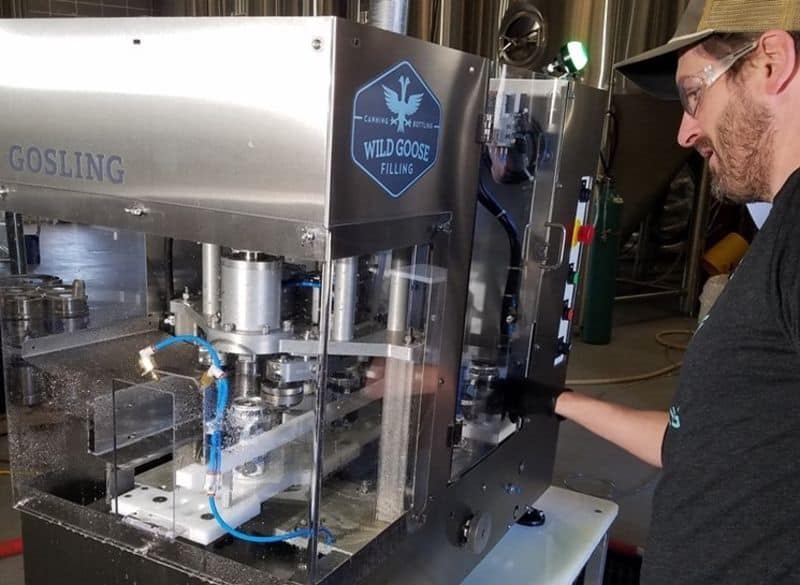
Photo Credit: Westword
When the COVID-19 pandemic hit Colorado, it caused a “candemic” in the brewery industry. There was a rush by breweries all over the country to find ways to package and sell their beer on the go, since they were no longer allowed to keep their taprooms open to the public due to social distancing restrictions. This issue hit the smaller, independent brewers particularly hard. A quick search on Twitter for “#candemic” shows numerous breweries coming up with ways to deal with their shortages.
Enter WildGoose. Recently, they created a new product made for small breweries called the Gosling, a countertop canner that can fill 12 cans a minute. Originally this product was to be debuted at a craft breweries conference, but when the conference was cancelled (due to COVID-19) the founder sold his product to Denver’s Ratio Beerworks to ramp up production and then moved his prototype to Odd13 Brewing, opening it up for small breweries to use. Any brewery that wants, can bring their beer by the keg and quickly fill cans, often getting donated cans from Odd13 and WildGoose. Since this quick pivot happened, Odd13 has had breweries lined up to use the Gosling canner for free.
Learn More: Guiding Principals for Creating a Human Brand
WildGoose did something beautiful. They thought differently about who their customer was. It wasn’t just the breweries anymore but the people those breweries depended on for business. They were able to use a product they were launching for good by helping their local industry that has been struggling in these tough times. In addition, they have been able to satisfy their mission of respecting the quality and integrity of beer by opening up their canner for free use.
WildGoose shows us that “being there” doesn’t need to happen on a grand, global or national in scale. In fact, some of the most impactful actions are focused on struggling peers in their own backyard:
-
- Credible: The dedication to their industry and their mission ensured that their pivot was embraced by the industry
- Compassionate: Offering a prototype for free to breweries that are forced to shut down taprooms in the Colorado market
- Competent: A renowned canning and bottling expert with a new technology that would transform the micro-brewery industry
The bottom line: The support WildGoose gave their local industry has provided these small breweries the ability to can and sell curbside, offering a much-needed revenue stream during a very difficult time and delicious craft beer for the rest of us.
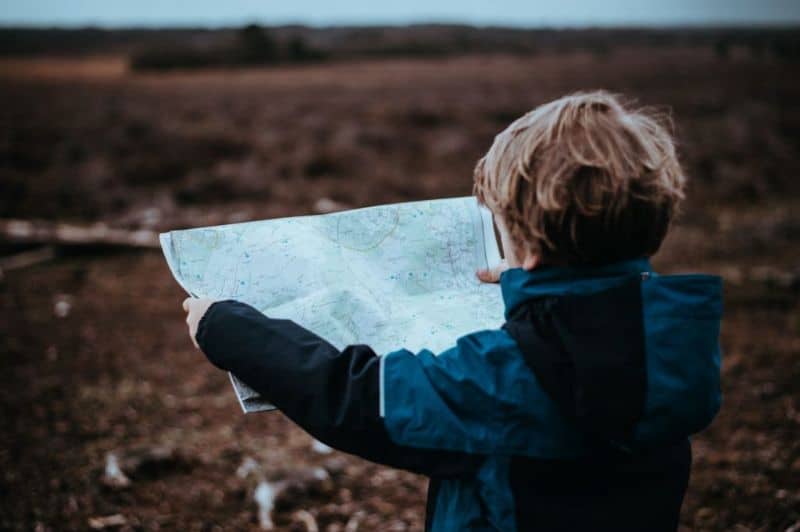
Making Sense of It All
In times of hardship and crisis, we learn a lot about ourselves and our brands. What these three examples show us is that there is an opportunity to make an impact, help your business and let people know you’re truly here for them. Learning from brands like Walmart, Zoom, and WildGoose Filling, we’ve compiled 7 things that every brand, no matter the industry, can start thinking today to help them find a way to make a positive impact that’s on-business and on-brand:
-
- Use purpose as a guide – Staying true to your purpose will help ensure that whatever action you take, it will be on-brand
- Don’t be afraid to pivot – Look at where there is opportunity, knowing your brand gives you permission to go where others cannot
- Let insights lead the way – Use insights to help identify the core needs of the most important stakeholders so you can maximize any investment you make
- Rethink who your customers are – Look at your ecosystem to determine if your customer tomorrow is different from your customer today
- Be in it together – Think about how you can use new partners (or existing ones in new ways) as these partnerships are critical during times when budgets and resources can be limited for everyone
- Think further into the future – Start thinking today about the evolved role your brand can play in this new future
- Be human! Transparency, communication, commitment and perseverance will ensure we are all here when others need us most
Are you experiencing any challenges planning for the future of your brand in the age of COVID-19? Have you identified a way that your brand could make an impact and help your business? We’d love to hear more about what you are experiencing. Tell us more here.



